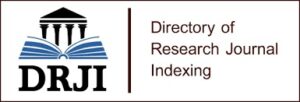A Review of Vibration-Based Damage Detection in Civil Structures: From Traditional Methods to Machine Learning and Deep Learning Applications
Structural health monitoring (SHM) is essential for ensuring the safety and longevity of civil infrastructure. Among various SHM techniques, vibration-based damage detection has gained significant attention due to its non-destructive nature and effectiveness in identifying structural anomalies. Traditional methods, including modal analysis, frequency-based approaches, and wavelet transform techniques, have been widely employed for detecting structural damage. However, these approaches often struggle with high computational costs, sensitivity to environmental variations, and limited accuracy in complex structures. Recent advancements in artificial intelligence (AI) have revolutionized vibration-based damage detection by introducing machine learning (ML) and deep learning (DL) techniques. These AI-driven approaches enable automated feature extraction, improved damage classification, and enhanced predictive capabilities.
Keywords: Structural health monitoring, vibration-based damage detection, machine learning, deep learning, artificial intelligence, civil infrastructure




















